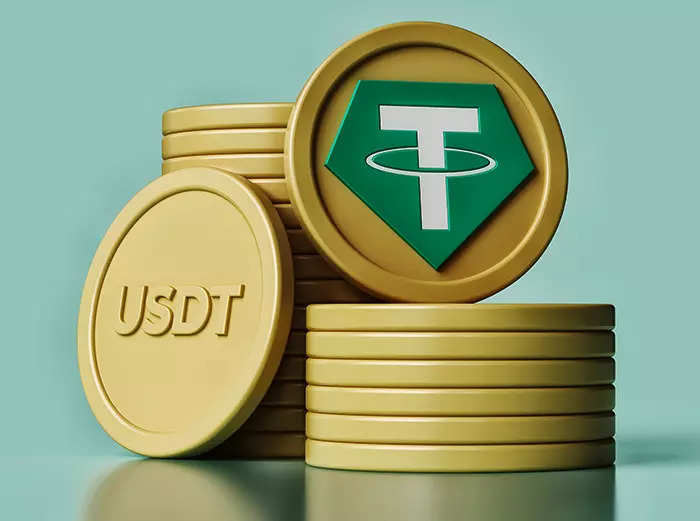Join Our Telegram channel to stay up to date on breaking news coverage
Tether, the largest stablecoin issuer, has announced its intention to buy Bitcoin using realized profits to bolster its reserves. This move by Tether showcases its confidence in the leading cryptocurrency and highlights the growing synergy between stablecoins and digital assets.
By buying Bitcoin, Tether is demonstrating that it has faith in the potential of the cryptocurrency and is displaying that it is willing to invest in it. This is a sign of trust and is indicative of the fact that stablecoins are increasingly being seen as a viable option for digital asset investments.
In a recent statement, Tether revealed its plan to use profits from its investment portfolio to purchase Bitcoin. The company believes that Bitcoin’s long-term value proposition aligns with its goal of maintaining a secure and reliable stablecoin.
Tether is one of the most prominent stablecoin providers in the crypto space. Its USDT token serving as a widely adopted digital representation of the US dollar. By maintaining a reserve of traditional assets equivalent to the amount of USDT in circulation, Tether ensures stability and confidence in its stablecoin.
The decision to invest in Bitcoin demonstrates Tether’s recognition of the cryptocurrency’s established position and potential for future growth. Bitcoin has consistently proven its resilience and became an increasingly mainstream asset. By adding Bitcoin to its reserve holdings, Tether aims to diversify its portfolio and capitalize on the positive market dynamics of the leading cryptocurrency.
This move also reflects the broader trend of stablecoin issuers exploring cryptocurrency opportunities. Stablecoins have gained significant traction due to their ability to provide a reliable digital representation of traditional assets.
In addition, they offer blockchain technology speed and efficiency. By venturing into digital assets like Bitcoin, stablecoin issuers leverage the benefits of both worlds, combining stability and decentralization.
This move seeks to capitalize on the growing trend of decentralized finance (DeFi) and leverage Bitcoin’s increasing adoption rate to expand its user base. With Bitcoin, stablecoin issuers can also benefit from the underlying blockchain infrastructure and the security of the network, making transactions more secure.
Additionally, Bitcoin’s global liquidity provides more options for stablecoins to be used as a medium of exchange, which can drive up demand for them.
However, it is important to note that stablecoins, including Tether, have faced scrutiny and regulatory challenges in the past. Concerns have been raised regarding the transparency of their reserves and the potential impact they may have on financial system stability. As a result, stablecoin issuers have been actively working towards addressing these concerns and enhancing transparency measures.
Tether’s decision to utilize realized profits for purchasing Bitcoin is a strategic move that strengthens its reserves and highlights the company’s commitment to transparency. By using profits generated from its investment activities, Tether aims to demonstrate the source of funds for its Bitcoin purchases. This will assure its users and regulators.
With this move, Tether is hoping to gain the trust of its users and regulators, as it will be able to demonstrate that the Bitcoin it holds in reserve was purchased from profits generated from its investment activities. This will help to allay any concerns around the source of funds for its Bitcoin purchases.
The intersection of stablecoins and digital assets continues to evolve, presenting new opportunities and challenges for the cryptocurrency industry. Tether’s announcement to invest in Bitcoin showcases the growing recognition of digital assets’ potential and their integration with stablecoin ecosystems.
As the market evolves, stablecoin issuers will need to maintain transparency, adhere to regulatory requirements, and navigate the dynamic landscape of cryptocurrencies. This will ensure their continued success and stability.
Join Our Telegram channel to stay up to date on breaking news coverage


